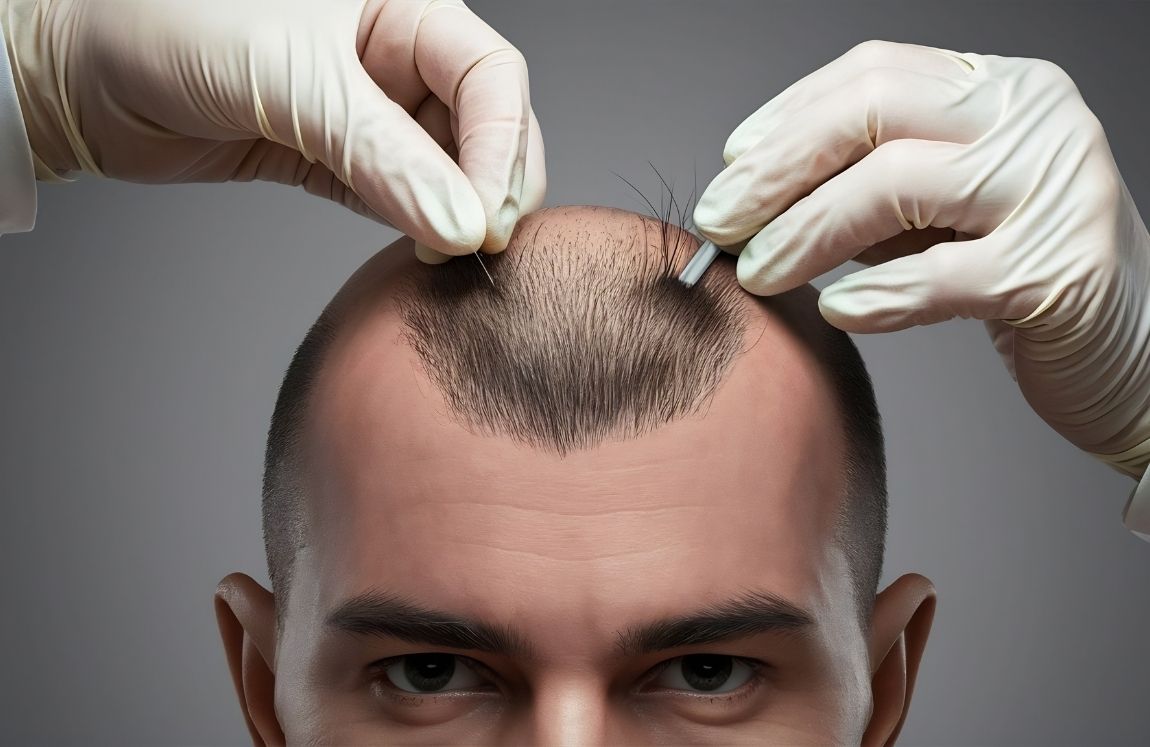Tabla de Contenidos
¿Do transplanted follicles retain the “memory” of their original location?
Hair transplant surgery is an effective solution for alopecia, but what really happens to the hair that is moved from one place to another? The key to the success of this procedure lies in a fascinating concept: the genetic memory of the hair follicles. This “memory” ensures that the transplanted hair maintains the same characteristics it had in its area of origin, a crucial phenomenon for achieving long-lasting, natural results.
The Genetics Behind the Resistance
Androgenetic alopecia, the most common form of hair loss, primarily affects the follicles on the top and front of the scalp. This is because these follicles are genetically susceptible to dihydrotestosterone (DHT), a hormone derived from testosterone. Over time, DHT miniaturizes these follicles until they stop producing hair.
However, the follicles in the donor area, typically the back and sides of the head, are genetically different. These follicles are not affected by DHT, which explains why hair in these areas is usually much denser and resistant to falling out, even in people with advanced alopecia.
When a surgeon extracts these resistant follicles and transplants them to the bald areas (the recipient area), they carry that genetic “memory” with them. In their new location, they continue to be immune to DHT. This is the reason why transplanted hair will not fall out due to androgenetic alopecia.
What Characteristics Are Preserved?
In addition to resistance to hair loss, transplanted follicles retain other “memories” of their place of origin that are vital for the final aesthetic outcome:
- Color and Texture: If the hair on the back of the neck is curly, the transplanted hair will also grow curly. If it’s a specific color, it will maintain that color. The texture, thickness, and shape of the follicle are all transferred, ensuring that the new hair blends naturally with the pre-existing hair.
- Growth Rate and Life Cycle: The life cycle of a hair follicle consists of three phases: anagen (growth), catagen (transition), and telogen (resting). Transplanted follicles maintain their original growth pattern; that is, the time they spend in each phase is the same as in their donor area. This is essential for the hair to grow at a predictable and consistent rate.
- Resistance to Sun and Weather: Exposure to the sun and other environmental factors can affect hair, but the inherent resilience of the donor follicles remains. Their ability to resist sun bleaching or damage from wind and water is not altered in their new location.
What if the Donor Area Isn’t Optimal?
It’s important to note that the success of the transplant largely depends on the quality of the donor area. If the follicles in this area are not dense or resilient enough, the result may be less effective. Therefore, a prior evaluation by a specialist is crucial to determine if a patient is a good candidate for a transplant. The surgeon must ensure there are enough healthy, resistant follicles to achieve a lasting, aesthetic result.
In conclusion, the genetic memory of the hair follicles is the cornerstone of successful hair transplantation. It is not a myth; it is the scientific basis that allows grafted hair to not only grow but to do so permanently and with all the characteristics that made it resistant in its place of origin. Thus, baldness is no longer a losing battle, transforming into an opportunity to regain confidence and a healthy, lasting head of hair.
With Hairfix you can get your lost hair back. Book your consultation appointment and discover the best solution for you.





